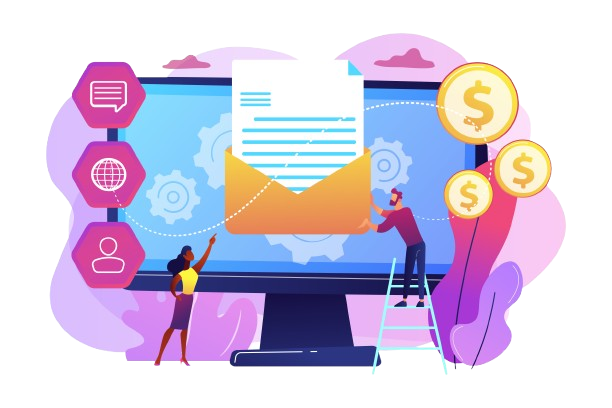Email Marketing
- Campaign Management: Designing and executing email campaigns.
- Automation: Setting up automated email sequences.
- List Building: Strategies to grow your email subscriber list.

Email Marketing
Email marketing is a digital marketing strategy that involves sending emails to a targeted group of recipients to promote products, services, or brand awareness. It is one of the most cost-effective and direct ways to communicate with an audience. Here’s an overview of the key components and best practices of email marketing:
1. Types of Email Marketing Campaigns
- Newsletters: Regular updates about your company, products, industry trends, or any valuable content.
- Promotional Emails: Emails aimed at offering discounts, special deals, or product launches.
- Transactional Emails: Confirmation of a purchase, shipping information, or password reset requests.
- Welcome Emails: Sent when a user subscribes to your email list, setting the tone for future communication.
- Re-engagement Emails: Designed to reconnect with inactive subscribers.
2. Benefits of Email Marketing
- Direct and Personalized Communication: Emails allow you to directly reach your audience, personalize content, and build relationships.
- High ROI: Email marketing has a high return on investment (ROI) due to its low cost and direct reach.
- Measurable Results: You can track open rates, click-through rates, conversions, and more.
- Automation: With tools, you can automate your campaigns, sending personalized emails at optimal times.
3. Key Elements of an Effective Email Marketing Campaign
- Subject Line: A compelling subject line is critical in getting your email opened. It should be clear, concise, and enticing.
- Sender Name: Ensure the sender’s name is recognizable to avoid your email ending up in the spam folder.
- Call to Action (CTA): Each email should have a clear and actionable CTA to guide the reader on what to do next.
- Design and Mobile Optimization: Your email should be visually appealing and easy to read on both desktop and mobile devices.
- Segmentation: Group your email list based on demographics, behavior, and interests to send more targeted, relevant content.
- Testing and Optimization: A/B testing different email elements (subject lines, CTAs, images) helps improve your campaign performance over time.
4. Best Practices
- Build a Quality Email List: Always get permission before adding someone to your list and avoid buying email lists.
- Respect Privacy: Include an easy way to unsubscribe and follow regulations like GDPR or CAN-SPAM Act.
- Send Valuable Content: Don’t overwhelm your audience with promotional content. Provide value and relevance.
- Consistency: Don’t bombard your subscribers with emails, but also don’t be too infrequent. Find the right balance for your audience.
- Subject Line Optimization: Make your subject lines attention-grabbing, but avoid clickbait.
- Mobile-Friendly Design: Many people check emails on mobile devices, so ensure your emails look good on all screen sizes.
5. Tools for Email Marketing
- Mailchimp: A popular email marketing tool for creating, sending, and analyzing campaigns.
- Constant Contact: Provides templates and automation for email marketing.
- ConvertKit: Focuses on email marketing for creators, bloggers, and small businesses.
- ActiveCampaign: Offers email marketing with CRM and marketing automation features.
- Sendinblue: Combines email marketing with additional features like SMS marketing and live chat.
6. Metrics to Track in Email Marketing
- Open Rate: The percentage of recipients who open your email.
- Click-Through Rate (CTR): The percentage of recipients who clicked a link in your email.
- Conversion Rate: The percentage of recipients who completed an action, such as making a purchase or signing up.
- Bounce Rate: The percentage of emails that couldn’t be delivered.
- Unsubscribe Rate: The rate at which people unsubscribe from your emails.
Effective email marketing requires a strategy that balances value, frequency, and relevance. When done right, it can significantly enhance customer relationships and drive conversions.

